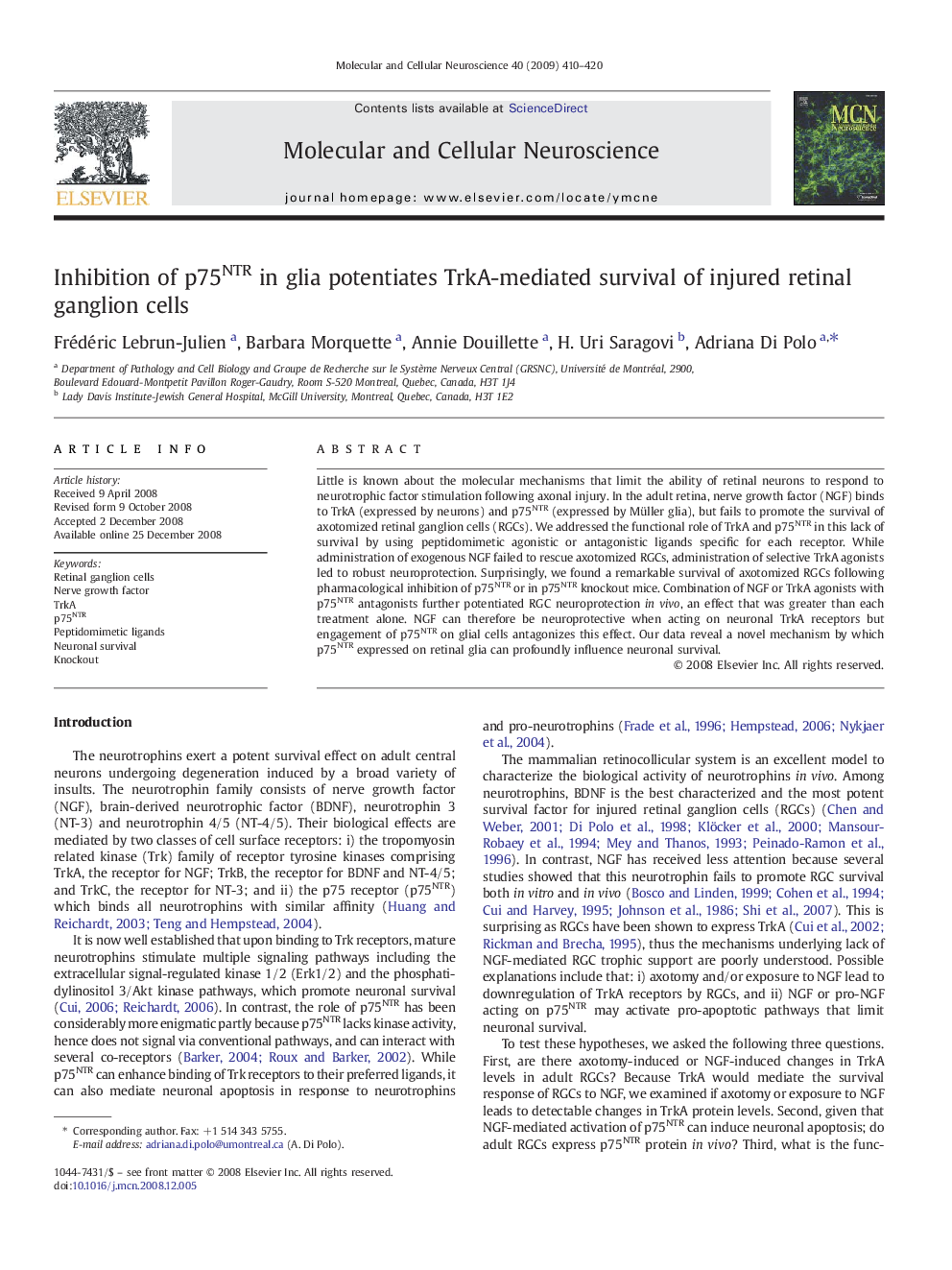| Article ID | Journal | Published Year | Pages | File Type |
|---|---|---|---|---|
| 2198884 | Molecular and Cellular Neuroscience | 2009 | 11 Pages |
Little is known about the molecular mechanisms that limit the ability of retinal neurons to respond to neurotrophic factor stimulation following axonal injury. In the adult retina, nerve growth factor (NGF) binds to TrkA (expressed by neurons) and p75NTR (expressed by Müller glia), but fails to promote the survival of axotomized retinal ganglion cells (RGCs). We addressed the functional role of TrkA and p75NTR in this lack of survival by using peptidomimetic agonistic or antagonistic ligands specific for each receptor. While administration of exogenous NGF failed to rescue axotomized RGCs, administration of selective TrkA agonists led to robust neuroprotection. Surprisingly, we found a remarkable survival of axotomized RGCs following pharmacological inhibition of p75NTR or in p75NTR knockout mice. Combination of NGF or TrkA agonists with p75NTR antagonists further potentiated RGC neuroprotection in vivo, an effect that was greater than each treatment alone. NGF can therefore be neuroprotective when acting on neuronal TrkA receptors but engagement of p75NTR on glial cells antagonizes this effect. Our data reveal a novel mechanism by which p75NTR expressed on retinal glia can profoundly influence neuronal survival.
